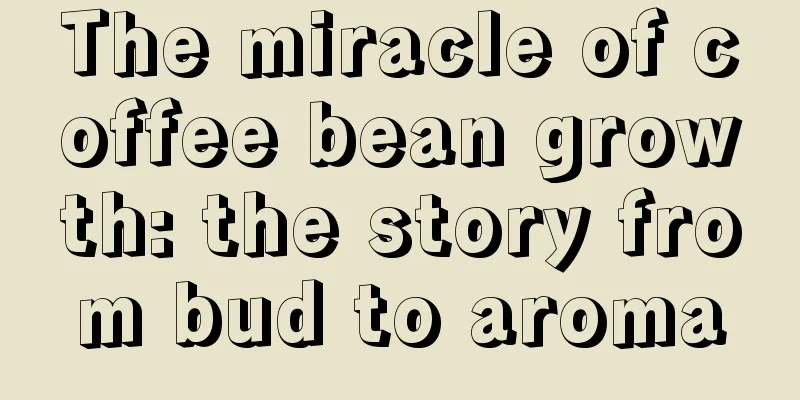Key points of coffee industry certificate assessment

Key points of coffee industry certificate assessmentThe coffee industry is a competitive field. For people who work in coffee-related fields, it is very important to have certain professional knowledge and skills. In order to improve the quality and level of practitioners, many countries have established corresponding coffee industry certificate assessment institutions. This article will focus on the key points of coffee industry certificate assessment. 1. Coffee varieties and originsIn the coffee industry, coffees of different varieties and origins have different characteristics and tastes. Therefore, in the certificate assessment, it is necessary for students to be familiar with the main varieties (such as Arabica, Robusta, etc.) and their origins (such as Brazil, Colombia, etc.). 2. Raw material processing and baking technologyRaw material processing and roasting technology directly affect the taste and quality of the final product. In the certificate assessment, students need to understand and master common raw material processing methods (such as wet method, dry method, etc.), as well as the impact of different roasting degrees on coffee flavor. In addition, students also need to understand the use and maintenance of roasting equipment. 3. Coffee extraction and brewing technologyCoffee extraction is one of the key steps in making a good cup of coffee. In the certificate assessment, students need to understand different extraction methods (such as dripping, soaking, etc.) and their respective advantages and disadvantages, and be able to make reasonable choices based on customer needs. In addition, students also need to master the modulation techniques, including milk foam making, latte art, etc. 4. Coffee knowledge and service skillsAs a person engaged in coffee-related work, in addition to professional knowledge and skills, a good service attitude is also essential. In the certificate assessment, students need to master basic coffee knowledge (such as types, origins, history, etc.) and have good communication and service skills. 5. Health and safety managementHealth and safety management is an aspect that must be taken seriously in any industry, and is particularly important in the coffee industry. During the certificate assessment, students need to understand and comply with relevant health and safety regulations, including food safety, equipment operation safety, etc. 6. Development trend of coffee industryThe coffee industry is a field that is constantly developing and changing. In the certificate assessment, students need to understand the current development trends of the coffee industry, including emerging markets, changes in consumer demand, etc., and be able to make corresponding adjustments based on market demand. ConclusionThrough the discussion of the key points of the coffee industry certificate assessment, we can see that the knowledge and skills required to engage in related work in the coffee industry are very rich. Only through systematic learning and practice can we improve our competitiveness in this highly competitive field. I hope this article will be helpful to readers who are preparing to take the coffee industry certificate assessment or are interested in this field. |
<<: Peet's Coffee and Starbucks: A win-win coffee partnership
>>: Kudi Coffee: The perfect balance of quality and value
Recommend
The whole process of coffee bean production revealed!
Coffee beans are the basic raw material for makin...
Complete list of coffee bean brands!
Coffee is one of the most popular drinks in the w...
American coffee: Arabica coffee beans are the soul!
Americano is a classic coffee made with Arabica c...
Coffee Industry | Eight Questions You Need to Think About When Opening a Coffee Shop
Opening a coffee shop is the dream of many people....
Soda water and coffee, a wonderful fusion journey
The combination of soda water and coffee opens up...
Blue Mountain Coffee: Exploring the Secrets of the Variety Behind the First
Blue Mountain coffee is a prestigious coffee vari...
Chinese medicine practitioners talk about the pros and cons of coffee. People who drink coffee for a long time should read this!
Many professionals like to drink coffee, not only ...
Nestle Pure Coffee, Unlock the Most Delicious Brewing Method
Nescafé Pure Coffee is a high-quality coffee with...
Starbucks coffee won't make you fat
Why Starbucks Coffee Won't Make You Fat In to...
Yunhard Coffee: A refreshing experience for both body and mind
Yunhard Coffee: A refreshing experience for both ...
Coffee revives my life, and I fight again - my indissoluble bond with coffee
I have an indissoluble bond with coffee, and coff...
The price of a small bottle of Nestle coffee revealed, how much does a bottle cost?
Uncover the price of a small bottle of Nestle cof...
Can black bean vinegar turn white hair into black?
Black beans boiled with vinegar is believed to be...
How many of the world's top ten famous coffee bean varieties do you know?
Top 10 famous coffee bean varieties in the world ...
Opening a coffee shop is still profitable
Opening a Cafe: A Money Making Opportunity In tod...









